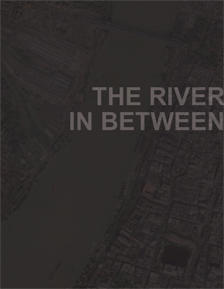Hooghly River
ghats, river banks and the port

Students: Sandrine Grossenbacher, Sarah Saunders
Location: Group work in Kolkata
Date: November, 2008
Type: Research project, student work, Hooghly River
Background
Hooghly River, one of the major distributaries of the Ganges, is the reason for Kolkata’s existence and the city’s location. Offering a natural harbor and being strategically located near the production areas of the jute industries, as well as in proximity to the Bay of Bengal, the choice of the location for the city by its founder Job Charnock proved to be decisive, marking its development ever since. Today, most of the city’s major functions and infrastructures are located along the Hooghly River. Kolkata’s main train station, Howrah Station, the big colonial fort, ageing jute factories, power stations, the harbor and all warehouses can be found on either side of the river. The Kolkata harbor is scheduled to undergo major redevelopment, with a major container terminal being constructed further downstream towards the Bay of Bengal. Apart from those infrastructural and logistical functions, the river is the center of many ritual activities in the Hindu life. A number of temples and shrines can be found on the ghats (river embankments, usually in the shape of steps) where Hindu believers immerse themselves in the holy (and dirty) waters of the Hooghly. Burning ghats are located upstream from the city center, where the city’s dead are burned and their ashes dropped into the water.
Themes
Just as the river represents Kolkata’s reason d’etre and its lifeline, it is also its most threatened part. With climate change and a rising sea level, the city being located just barely above the mean water level, Kolkata’s major industries and logistical infrastructure areas are in danger of being severely disturbed or even flooded. At the same time, the city is currently developing a new understanding and relationship towards its river. Having long been a site of industry, traffic and garbage, the city is now ‘rediscovering’ Hooghly River with the attempt to turn it into a more public and social place. The opening of the so-called millennium park represents one of the most visible endeavors in this direction. The river is also a place where people from all groups of society come together in a single location. As the infrastructural spaces and the rituals are performed by all income levels and social groups, the river has always been a meeting place spanning class and caste. The river must also be understood as a dividing line within greater Kolkata. Bridged by only two bridges, city development has focussed on the eastern river bank, with the west being neglected and having developed into Kolkata’s sinister alter ego.
Project
Document the river along the whole length of the city. What is the range of institutions, activities and places that can be found there? What are the dangers that Kolkata is threatened by climate change and a possible rise of the sea level? Sketch out potential future developments of the river embankments, keeping in mind the climate change and a transformation of the public view of the river as a site of urban activities and social interchange. Document the divisive character of Hooghly River and the role of the bridges.
Download the Book PDF

